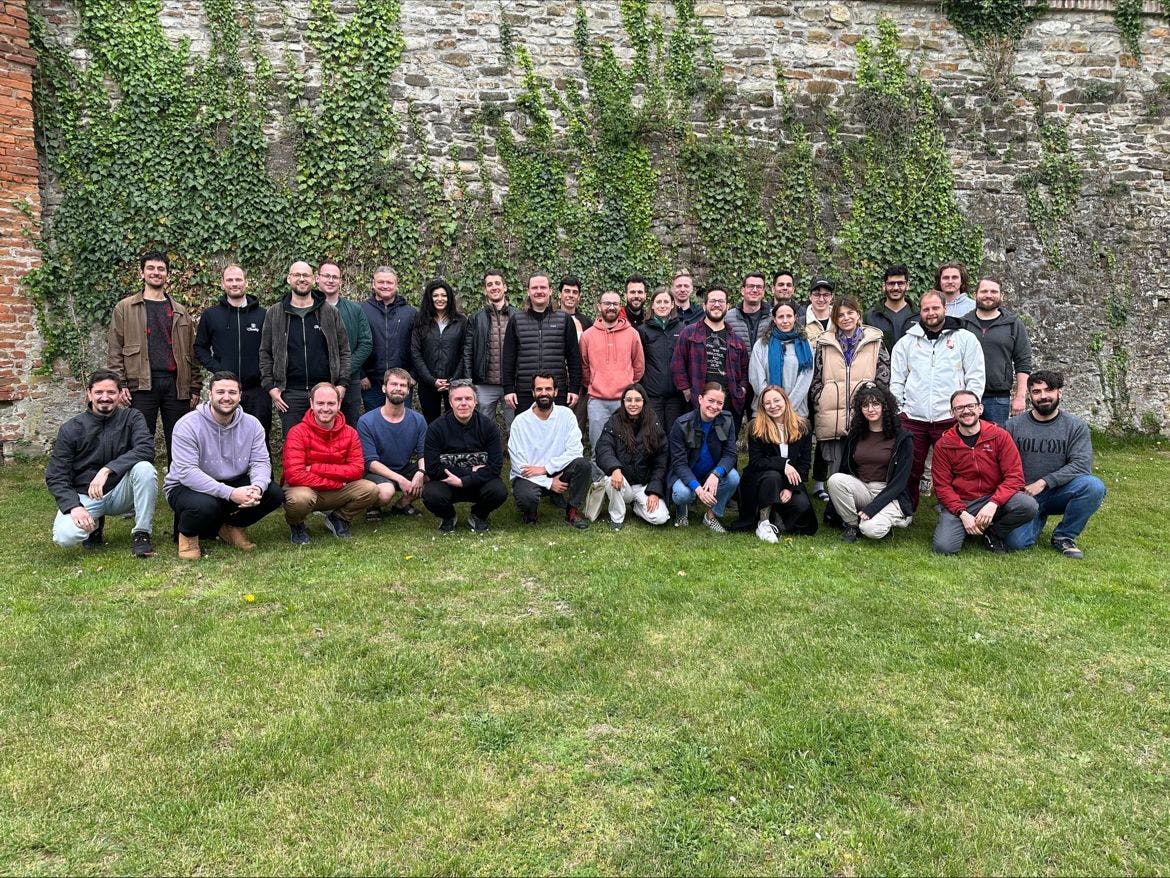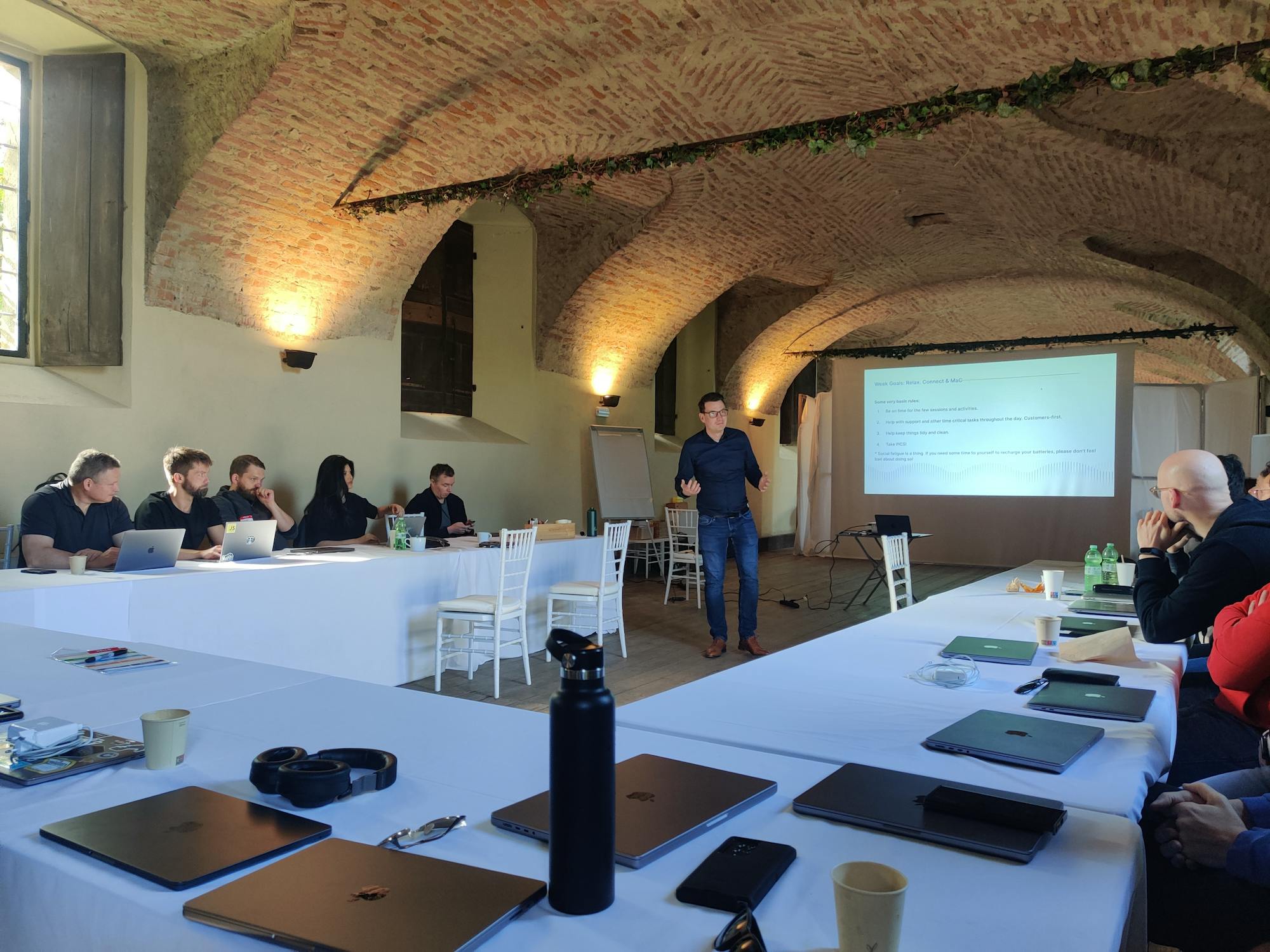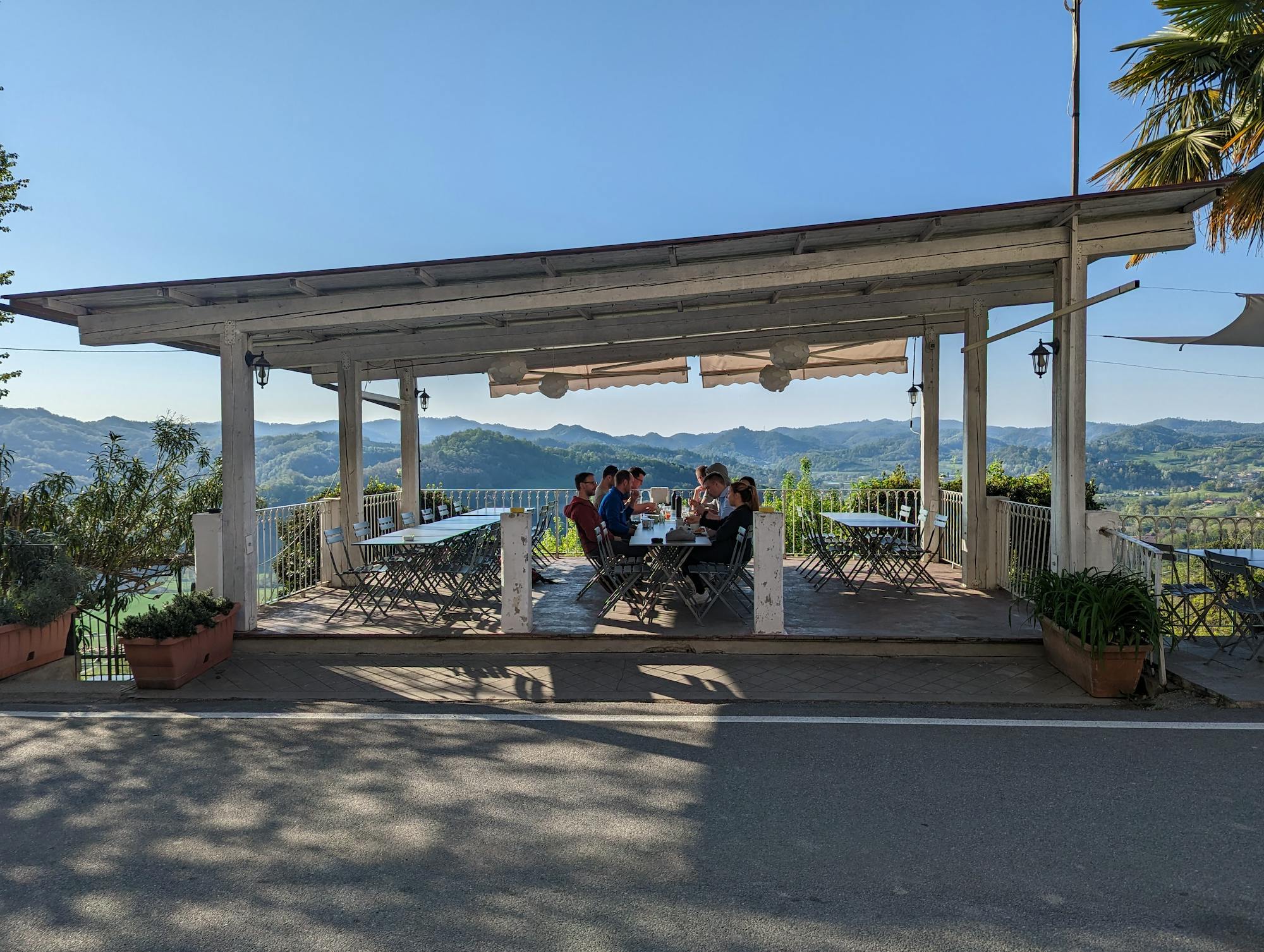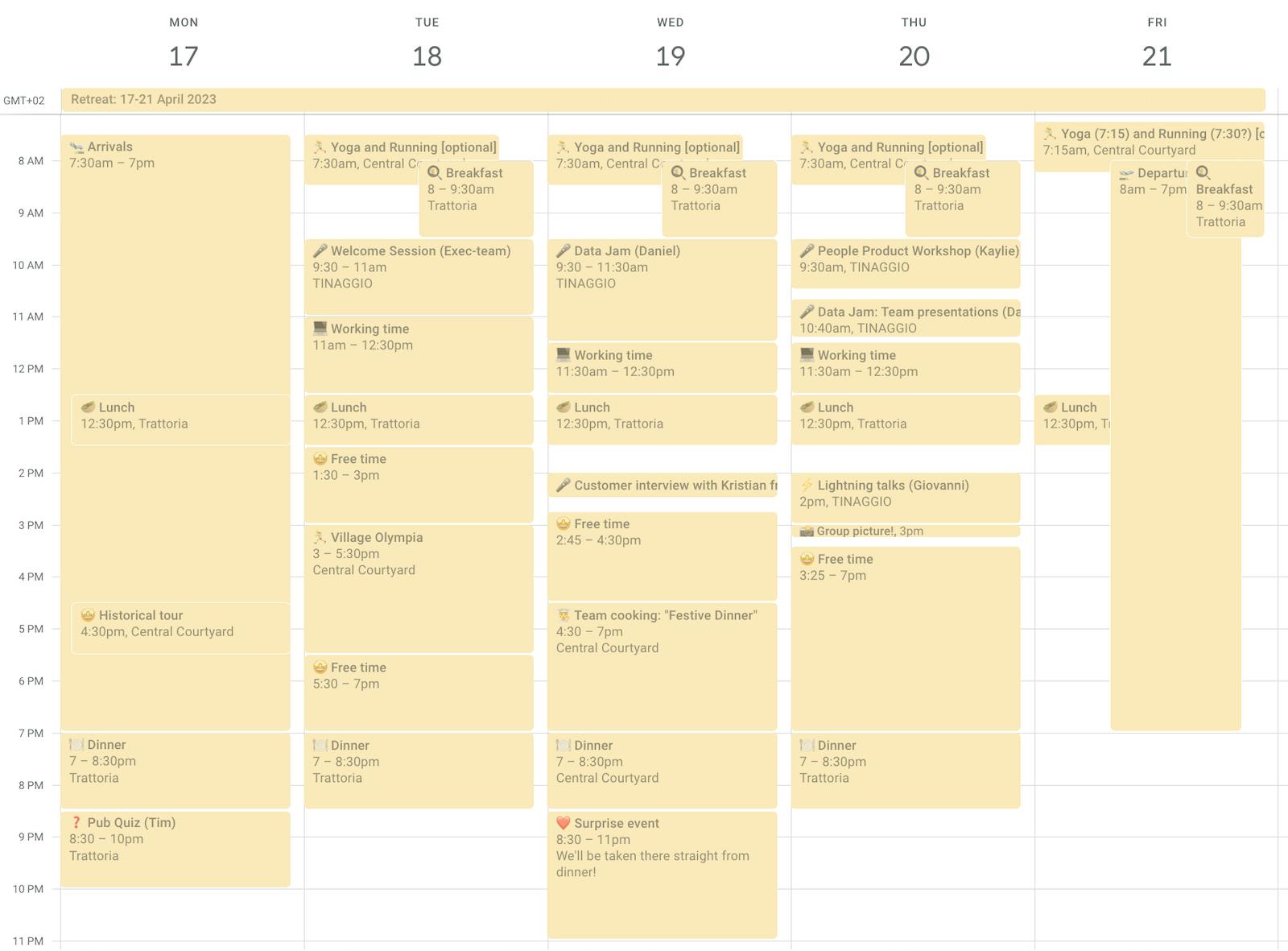Table of contents
At our recent company retreat, we set out to achieve 2 main goals with our fully remote team:
- Connect - Get to know each other, spend time with each other, have a great time and not only talk about work. This will help us deliver together at scale during the rest of the year.
- Align - Align the entire team around our main goal to establish Checkly as the leading synthetic monitoring company that enables developers to reliably code, test, and deploy their entire monitoring setup with our monitoring as code workflow, enabled by the Checkly CLI.

Based on the feedback from the team, we succeeded! 🎉
- 90% of respondents said they left the retreat feeling more connected to their teammates.
- 77% of respondents said they left the retreat feeling more aligned and with a good understanding of their role in reaching our MaC goal.
- With a general retreat satisfaction score of 9.1/10
The retreat schedule is a key component to achieve our retreat goals, and we’re happy to share with you what works best for us!
Define your retreat goals
You need to know what you’re working towards before you start planning everything else. Sounds obvious, right? Totally, but making it explicit, writing the purpose of your retreat down and aligning it with your leadership team sets you up for success.
You’ll have a hard time aligning everyone on the retreat schedule if they’re not aligned on why you’re doing the retreat in the first place.
Reserve 50% of retreat time for work
We commit to having a maximum of 50% of the retreat schedule dedicated to work. These can be sessions, workshops, or “working time” where people can work on stuff as they want.

We leave it up to the team members to figure out how they want to use their “working time”. Some will use it to work on something as a team, others will do some pair programming, and others will go in deep focus mode to solve a problem for a customer.

For sessions or workshops, we have a couple of guidelines:
- They have to benefit from the team being physically in one place. This means no sessions where one or a couple of people talk or present and the rest listens. (We make an exception for things like customer interviews and the welcome session where our leadership team goes over our strategy and progress.)
- They have to be (loosely) connected to our retreat goal.
- For workshops that require people to work together in smaller groups, we prefer to create cross-functional groups so that people have the chance to collaborate with colleagues they usually don’t get to work with.
Leave space for serendipity
So what do we do the other 50% of the time? Well, this is where the magic really happens! ✨

We organize a couple of activities (scavenger hunt, bike tour, cooking…) and we give lots of free time. Some of the strongest connections and greatest ideas come from conversations that naturally occur when nothing is planned.
There are two additional benefits that come with scheduling in free time:
- Your schedule becomes flexible. Retreats never go 100% according to plan, so with free time, you build flexibility into your plan.
- Social hangovers are a thing! When people have free time to be by themselves and recharge their batteries if needed, they don’t need to miss out on sessions or activities because they’re drained.

Ever since we started doing retreats in the summer of 2021, having a balanced schedule with free time, working time, sessions and activities, has been in top three things that people thought we did well and should definitely repeat again next time.
Company retreat goals: Final thoughts

A 50-50 split between work and non-work activities works well for our goals, team and culture. I’m definitely an advocate for letting your team find each other and maybe even allowing your team to get a little bored. However, to figure out if this split would work for you, you first should figure out what you’re really trying to achieve with your company retreat and work backwards from there.
Want some more help or have any questions? Feel free to leave a comment or reach out to me on LinkedIn!

